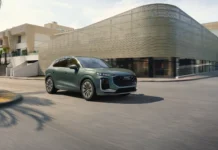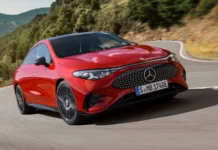In this TFL slip test, Tommy puts the 2018 Toyota Highlander Hybrid up against the 2019 Honda Pilot. These two SUVs both compete in the same class, and they both offer AWD. However, the way they send power to all four wheels is quite different. So, obviously we wanted to see how these two AWD systems compare. The TFL slip test is designed to remove traction from any specific wheel on a vehicle. We can use the slip test to see exactly how a vehicle performs in very specific grip conditions. Before we get into each vehicle’s performance, lets talk about their AWD systems.
Toyota Highlander: AWD-i
The Highlander has a unique, advanced AWD system Toyota calls AWD-i. That stands for “Intelligent all-wheel drive”. Under the hood is a 3.5-liter naturally aspirated V6, making 231 horsepower and 215 lb-ft of torque. That is paired with a motor-generator that develops 167 horsepower and 247 lb-ft of torque, both of which send power to the front wheels only (through a Continuously Variable Transmission). Unlike normal all-wheel drive crossovers, the back wheels do not have any mechanical connection to the powerplants in the front. Instead, the rear wheels are powered by their own 68 horsepower electric motor. Due to the way hybrid-electric drivetrains mesh up, total system output is 306 horsepower combined.
In normal driving conditions, the Highlander Hybrid drives itself primarily with the front wheels. But, if the front wheels lose traction, the rear wheels will kick in to keep things moving.
Honda Pilot: i-VTM4
Honda’s i-VTM stands for “Intelligent Variable Torque Management”, and it uses a pair of electro-hydraulically actuated clutches housed at the rear axle. That way, when the system thinks it needs to send power rearward, it can actually lock in each individual wheel independently. In dry conditions, it can also send torque to the outside wheel for better traction in the corners.
That AWD system receives its power from a 3.5-liter V6 engine. It makes 280 horsepower and 262 lb-ft of torque. On LX, EX and EX-L models, that power is routed through a six-speed automatic transmission. On Touring and Elite models, like the Pilot in this video, you get a nine-speed automatic instead.
How do they compare?
The AWD systems in these two SUVs are quite different. One is a hybrid with no mechanical linkage from the front engine to the rear wheels. One is a more traditional AWD system, making use of lots of tech to assign power where it’s needed.
The biggest difference here is how much of the total system power can be sent to the rear wheels. 68 horsepower is just 22 percent of the Highlander Hybrid’s total system output. 68 horsepower is also the maximum amount of power that can be used to spin the rear wheels in that configuration. The Pilot, by contrast, can send up to 70% of its 280 horsepower to the rear wheels.
The results of this difference speak for themselves. Check out the video above to see how each car fares. Stay tuned to TFLcar.com for more TFL slip tests.



























